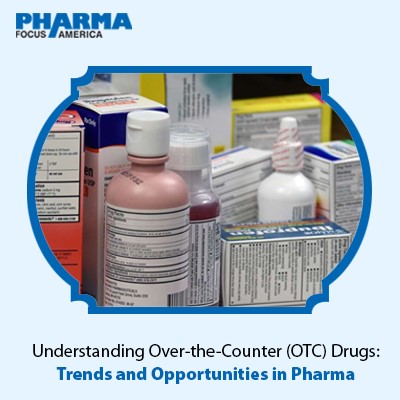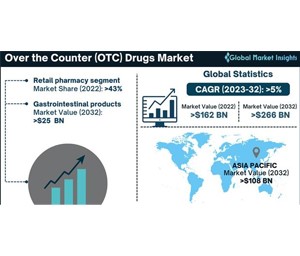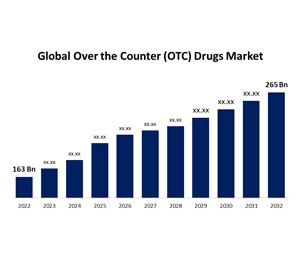
This article explores the growing role of over-the-counter (OTC) drugs in global healthcare, highlighting current trends such as increased health awareness, technological advancements, and an aging population. It examines opportunities for pharmaceutical companies in market expansion, product innovation, and global outreach while addressing challenges like regulatory compliance and market saturation.

Over-the-counter (OTC) drugs play a pivotal role in healthcare systems worldwide, offering patients convenient and often cost-effective access to medications without the need for a prescription. The OTC market encompasses a wide range of products, from pain relievers and antihistamines to cold medications and digestive aids. As the demand for self-medication rises, fueled by increasing health awareness and the desire for immediate relief, the OTC drug market continues to expand, presenting numerous opportunities and challenges for the pharmaceutical industry.
The Evolution of OTC Drugs

The concept of OTC drugs is not new; it dates back to ancient times when herbal remedies were commonly used to treat various ailments. However, the modern OTC market began to take shape in the 20th century as regulations and guidelines were established to ensure the safety and efficacy of these medications. The transition of certain drugs from prescription to OTC status marked a significant shift, making treatments more accessible to the general public.
A. Current Trends in the OTC Drug Market

Increased Health Awareness and Self-Care: The growing emphasis on personal health and wellness has led to a surge in self-care practices. Consumers are becoming more proactive in managing minor health issues, resulting in increased demand for OTC medications. This trend is particularly evident in segments like vitamins, dietary supplements, and preventive care products.
Technological Advancements: Technology has revolutionized the OTC market, from online pharmacies to mobile health applications. Digital platforms provide consumers with easy access to information about OTC products, enabling informed decision-making. Additionally, e-commerce has made purchasing OTC medications more convenient, further driving market growth.
Aging Population: The global population is aging, and with it comes an increased prevalence of chronic conditions and the need for continuous medication. OTC drugs, particularly those targeting common issues such as joint pain, indigestion, and minor infections, are in higher demand among the elderly demographic.
Regulatory Changes: Regulatory bodies around the world are increasingly facilitating the switch of drugs from prescription to OTC status. This trend not only broadens the market but also encourages pharmaceutical companies to invest in research and development for new OTC products.
Natural and Herbal Products: There is a growing consumer preference for natural and herbal OTC products perceived as safer alternatives to synthetic drugs. This trend is driving innovation in the development of OTC products that incorporate natural ingredients.
B. Opportunities for the Pharmaceutical Industry

Market Expansion: The expanding OTC market presents significant growth opportunities for pharmaceutical companies. By identifying and targeting unmet needs, companies can develop new OTC products or reformulate existing ones to capture market share.
Product Innovation: Innovation is key to staying competitive in the OTC market. Pharmaceutical companies can leverage advancements in drug delivery systems, such as fast-dissolving tablets and transdermal patches, to enhance product efficacy and consumer convenience.
Brand Building: Strong branding is crucial in the OTC market, where consumers often rely on brand recognition and trust when selecting products. Investing in marketing and consumer education can help build brand loyalty and drive repeat purchases.
Collaborations and Partnerships: Collaborations between pharmaceutical companies, healthcare providers, and technology firms can lead to the development of innovative OTC solutions. Partnerships with digital health platforms can enhance product visibility and consumer engagement.
Global Expansion: Emerging markets offer vast potential for growth in the OTC sector. As healthcare infrastructure improves and disposable incomes rise in these regions, the demand for OTC products is expected to increase. Pharmaceutical companies can explore new markets and tailor their product offerings to meet local needs.
C. Challenges in the OTC Drug Market

Regulatory Compliance: Navigating the complex regulatory landscape is a significant challenge for pharmaceutical companies. Ensuring compliance with varying regulations across different regions requires substantial investment in regulatory affairs and quality assurance.
Market Saturation: The OTC market is highly competitive, with numerous brands vying for consumer attention. Differentiating products in a crowded market requires continuous innovation and effective marketing strategies.
Consumer Education: While OTC drugs offer convenience, improper use can lead to adverse effects. Educating consumers about the correct usage and potential risks of OTC medications is essential to ensure safety and efficacy.
Pricing Pressures: The availability of generic OTC products exerts downward pressure on prices. Pharmaceutical companies must balance the need for affordability with the costs associated with research, development, and marketing.
Counterfeit Products: The proliferation of counterfeit OTC products poses a risk to consumer health and brand reputation. Implementing measures to combat counterfeit drugs, such as advanced packaging technologies and supply chain transparency, is crucial.
D. The Future of OTC Drugs

The future of the OTC drug market is promising, with continued growth driven by technological advancements, changing consumer behaviors, and regulatory support. Personalized OTC products, leveraging data from wearable devices and health apps, could offer tailored solutions for individual health needs. Additionally, the integration of artificial intelligence (AI) and machine learning in drug development and marketing strategies will further enhance the efficiency and effectiveness of OTC products.
Pharmaceutical companies that embrace innovation, prioritize consumer education, and navigate regulatory challenges will be well-positioned to capitalize on the opportunities in the OTC market. By fostering collaborations and investing in emerging markets, they can expand their reach and contribute to the overall improvement of public health.
Understanding the trends and opportunities in the OTC drug market is essential for pharmaceutical companies aiming to thrive in this dynamic sector. The growing emphasis on self-care, technological advancements, and the aging population are key drivers of market growth. By leveraging these trends and addressing the associated challenges, pharmaceutical companies can develop innovative OTC products that meet consumer needs and enhance health outcomes. As the market continues to evolve, staying attuned to consumer preferences and regulatory changes will be crucial for sustained success in the OTC drug industry.